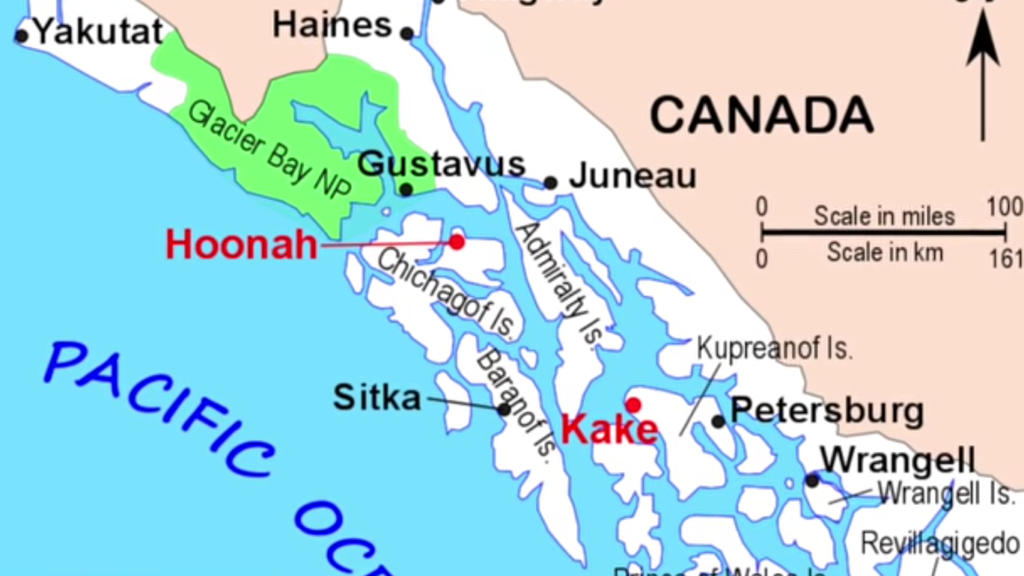
For eleven-thousand years, the Tlingit (‘People of the Tides’) have called southeast Alaska home. They were hunter-gatherers and expert fishermen with ready access to abundant food sources. Disputes with other tribes or within the tribe were rare, as territory was well-established and respected. For nearly all that time they had no contact with Europeans until 1741 when Tsarist Russian explorers entered their lands, followed by Spanish explorers in 1775. Russia considered all of Alaska its colony, although they confined themselves mainly to coastal settlements.
In 1799 Russian hunters, who had come in search of sea-otter pelts, established a settlement they called Sitka (now known as Old Sitka) several miles north of today’s modern Sitka, in the heart of Tlingit territory.

Disputes between the two parties culminated in an attack in 1802 by Tlingit warriors against Russian settlers in Old Sitka, who were forced out and had their settlement destroyed. The Russian colonists returned in 1804, aided by navy warships and Aleutian tribesmen from Russian colonies in southwestern Alaska. All told, they numbered about 1,500 combatants. The Battle of Sitka was about to begin.
Having anticipated the return of the Russians, the Tlingit had built a wooden fort at the mouth of a strategic river, with thick defensive walls made out of sapplings. Shís’gi Noow (Shiskinoow, meaning ‘the sapling fort’) was about 240 feet long by 165 feet wide, and defended by 800 men according to Russian accounts of the battle.
Additionally, the Tlingit had armed themselves with muskets and cannons purchased from British and American traders. The fort, reportedly, was located such that tidal flats prevented Russian Navy ships from getting close enough for their cannons to be effective. When the Neva did manage to get within range, her captain, Yuri Lisyansky, wrote that “It was constructed of wood so thick and strong the shot from my guns could not penetrate at the short distance of a cable’s length [between 600 and 720 feet],”

According to Tlingit oral history, during the battle a group of warriors were bringing a canoe full of gunpowder to resupply the fort when it was hit by enemy gunfire and blew up, killing many of their best men. Still, they managed to hold the fort for a number of days, only abandoning it when their supply of gunpowder was exhausted and they could no longer hold back Russian forces.

The battle is a source of pride for the Tlingit, and the location of the fort is considered sacred. Over time however, the exact spot where the fort had stood had been forgotten. Nevertheless, in 1910 a large area known to include the battleground was designated as Sitka National Monument to commemorate and memorialize the site. Beginning at about that time, multiple archaeological investigations were conducted over the course of more than a century in an attempt to pinpoint the fort’s original location, without success. In 1972 the site was re-designated Sitka National Historical Park.
The most recent study employed electromagnetic induction (EM) and ground-penetrating radar (GPR). These high-tech archaeological tools definitively identified the precise location of the fort’s walls and inner buildings.
About “Tlingit Alaskan natives” (4:40):
Question of the Night: Have you ever been to Alaska or wanted to go?
